Dengke Dong
Multi-Similarity Loss with General Pair Weighting for Deep Metric Learning
May 11, 2019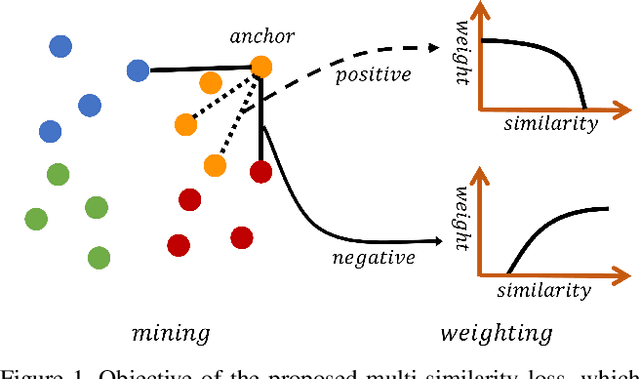


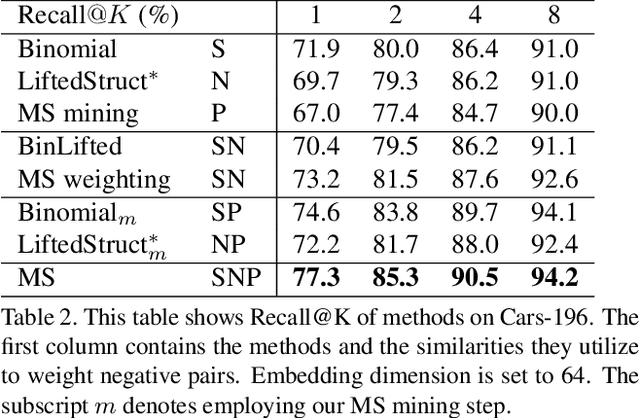
Abstract:A family of loss functions built on pair-based computation have been proposed in the literature which provide a myriad of solutions for deep metric learning. In this paper, we provide a general weighting framework for understanding recent pair-based loss functions. Our contributions are three-fold: (1) we establish a General Pair Weighting (GPW) framework, which casts the sampling problem of deep metric learning into a unified view of pair weighting through gradient analysis, providing a powerful tool for understanding recent pair-based loss functions; (2) we show that with GPW, various existing pair-based methods can be compared and discussed comprehensively, with clear differences and key limitations identified; (3) we propose a new loss called multi-similarity loss (MS loss) under the GPW, which is implemented in two iterative steps (i.e., mining and weighting). This allows it to fully consider three similarities for pair weighting, providing a more principled approach for collecting and weighting informative pairs. Finally, the proposed MS loss obtains new state-of-the-art performance on four image retrieval benchmarks, where it outperforms the most recent approaches, such as ABE\cite{Kim_2018_ECCV} and HTL by a large margin: 60.6% to 65.7% on CUB200, and 80.9% to 88.0% on In-Shop Clothes Retrieval dataset at Recall@1. Code is available at https://github.com/MalongTech/research-ms-loss.
CurriculumNet: Weakly Supervised Learning from Large-Scale Web Images
Oct 18, 2018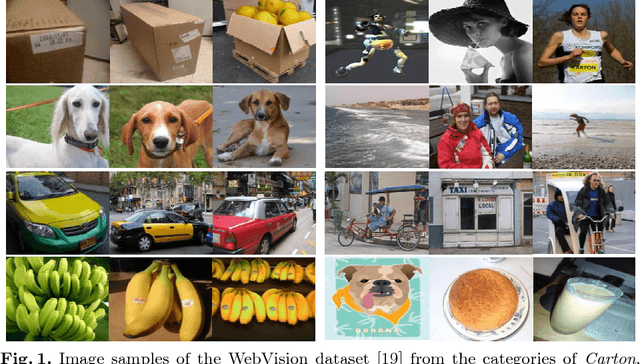

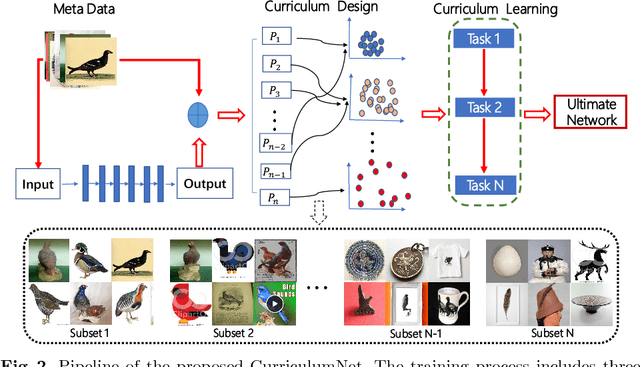

Abstract:We present a simple yet efficient approach capable of training deep neural networks on large-scale weakly-supervised web images, which are crawled raw from the Internet by using text queries, without any human annotation. We develop a principled learning strategy by leveraging curriculum learning, with the goal of handling a massive amount of noisy labels and data imbalance effectively. We design a new learning curriculum by measuring the complexity of data using its distribution density in a feature space, and rank the complexity in an unsupervised manner. This allows for an efficient implementation of curriculum learning on large-scale web images, resulting in a high-performance CNN model, where the negative impact of noisy labels is reduced substantially. Importantly, we show by experiments that those images with highly noisy labels can surprisingly improve the generalization capability of the model, by serving as a manner of regularization. Our approaches obtain state-of-the-art performance on four benchmarks: WebVision, ImageNet, Clothing-1M and Food-101. With an ensemble of multiple models, we achieved a top-5 error rate of 5.2% on the WebVision challenge for 1000-category classification. This result was the top performance by a wide margin, outperforming second place by a nearly 50% relative error rate. Code and models are available at: https://github.com/MalongTech/CurriculumNet .
Deep Metric Learning with Hierarchical Triplet Loss
Oct 16, 2018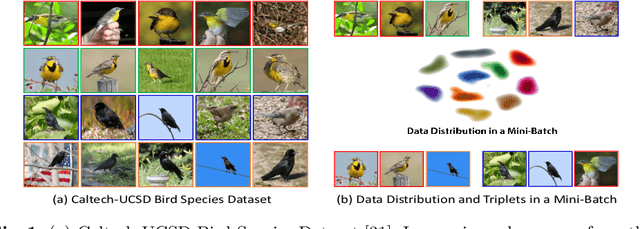
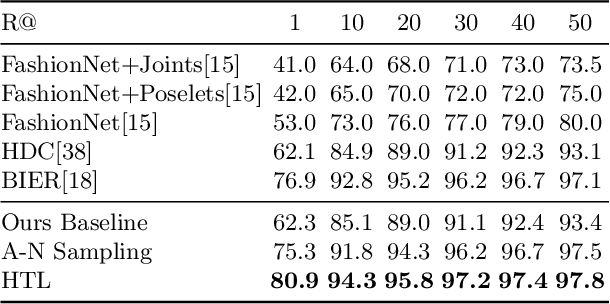
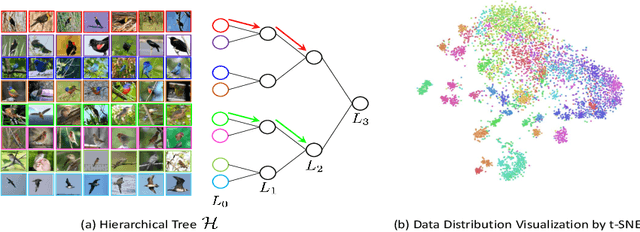
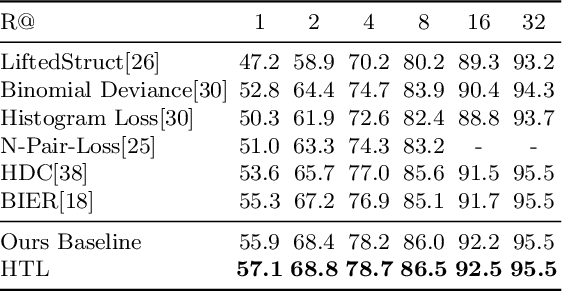
Abstract:We present a novel hierarchical triplet loss (HTL) capable of automatically collecting informative training samples (triplets) via a defined hierarchical tree that encodes global context information. This allows us to cope with the main limitation of random sampling in training a conventional triplet loss, which is a central issue for deep metric learning. Our main contributions are two-fold. (i) we construct a hierarchical class-level tree where neighboring classes are merged recursively. The hierarchical structure naturally captures the intrinsic data distribution over the whole database. (ii) we formulate the problem of triplet collection by introducing a new violate margin, which is computed dynamically based on the designed hierarchical tree. This allows it to automatically select meaningful hard samples with the guide of global context. It encourages the model to learn more discriminative features from visual similar classes, leading to faster convergence and better performance. Our method is evaluated on the tasks of image retrieval and face recognition, where it outperforms the standard triplet loss substantially by 1%-18%. It achieves new state-of-the-art performance on a number of benchmarks, with much fewer learning iterations.
 Add to Chrome
Add to Chrome Add to Firefox
Add to Firefox Add to Edge
Add to Edge